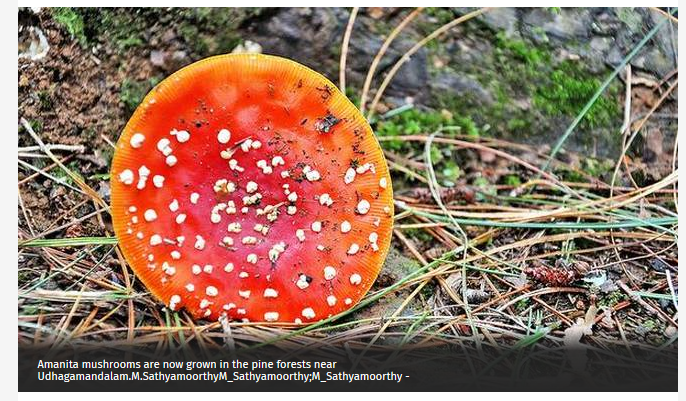Amanita muscaria
This is a collection of articles archived for the excellence of their content. |
In The Nilgiris
Amanita muscaria, commonly known as fly agaric, one of the most iconic varieties of mushrooms seen anywhere in the world, has begun to bloom in many parts of the Nilgiris after the continuous rain over the last couple of weeks.
The mushroom, which is known across the world because of its unmistakable coloration pattern and its bright red hue, is also known for its use as a psychedelic substance in many cultures and societies.
The mushrooms have begun blooming in many parts of the Nilgiris, including at places located near tourist spots, drawing the attention of tourists and photographers keen to photograph and document the mushrooms.
However, local botanists have cautioned tourists against collecting any specimens, as the Amanita muscaria, if eaten or accidentally ingested, are known to have caused several fatalities across the world.
Many tourists, who spotted the mushrooms near Thalaikundah in Udhagamandalam where the muscaria is found in considerable numbers, are unaware of the potential deadly effects of the toxins found in the mushrooms, and a few specimens have also been plucked from the ground over the last few days.
A. S. Krishnamoorthy, Professor and Head, Department of Plant Pathology, Mushroom Research and Training Center, Tamil Nadu Agricultural University, said that the muscaria occur in pine forests and have an ectomycorrhizal relationship - a symbiotic relationship with the root system of the tree. He said that it was used as a psychedelic intoxicant in many societies, but was now being used medicinally as well. V. Ramsundar, who was formerly with the Horticultural Department in Udhagamandalam, said that apart from muscaria, many different varieties of mushroom bloom in the Nilgiris, and most of the “coloured” varieties are not edible.
“Tourists should be educated about the mushrooms too, as not a lot of people know about the many varieties that are found in the Nilgiris,” said Mr. Ramsundar, who added that many of the “edible” varieties are consumed by the wildlife and cattle that live here.
